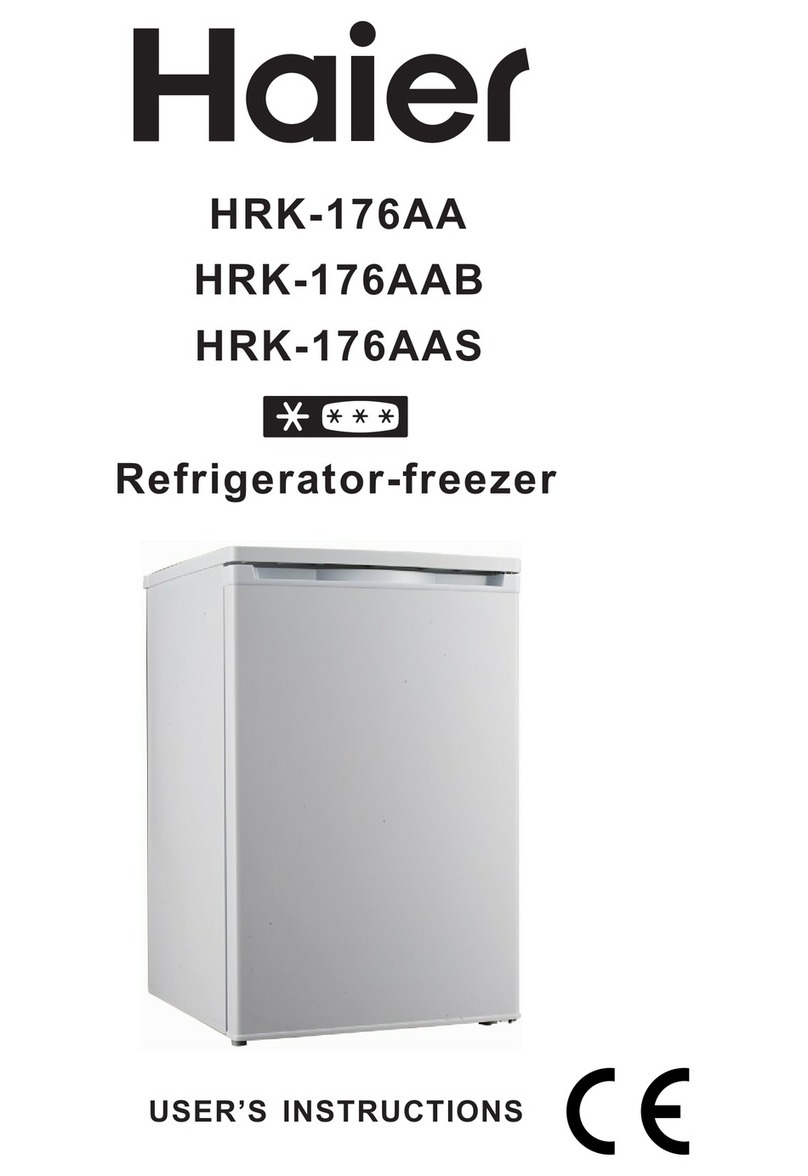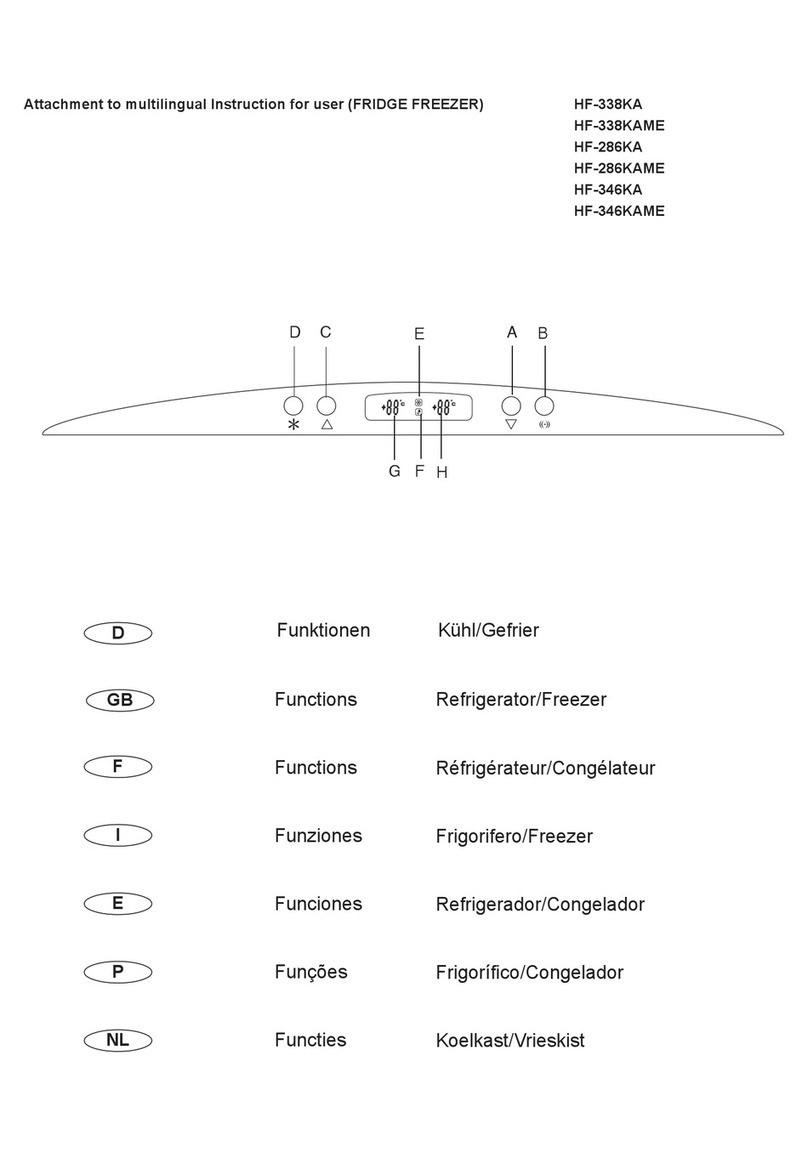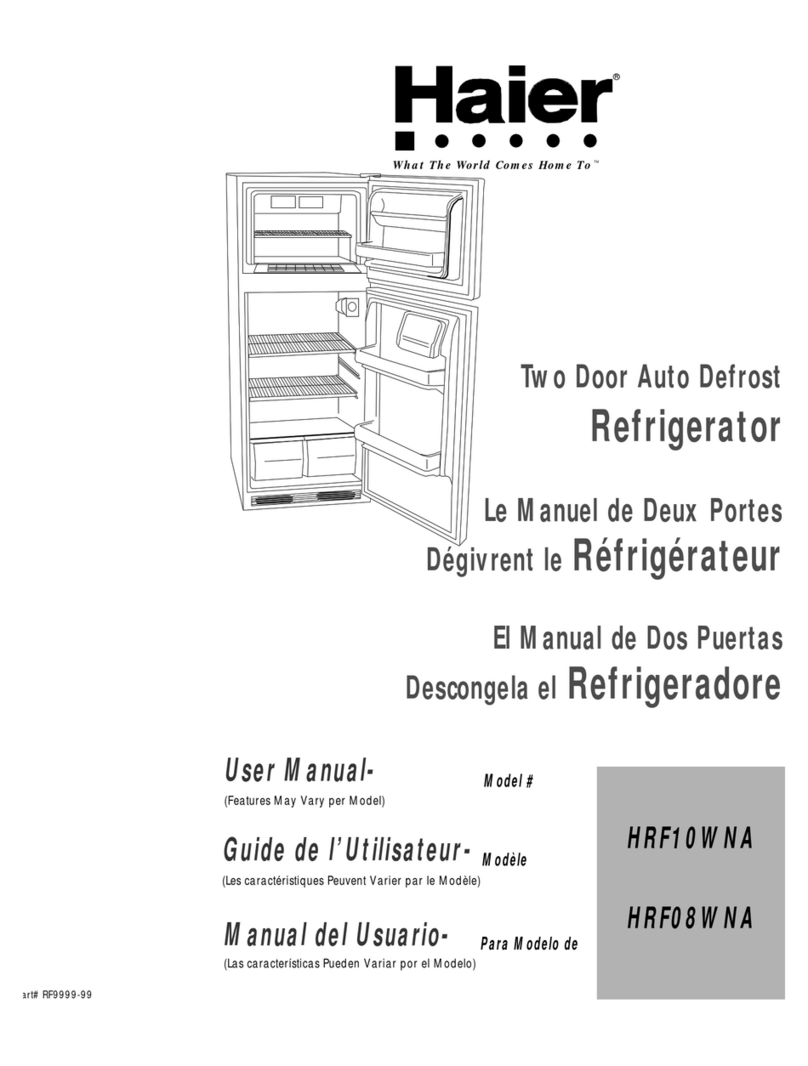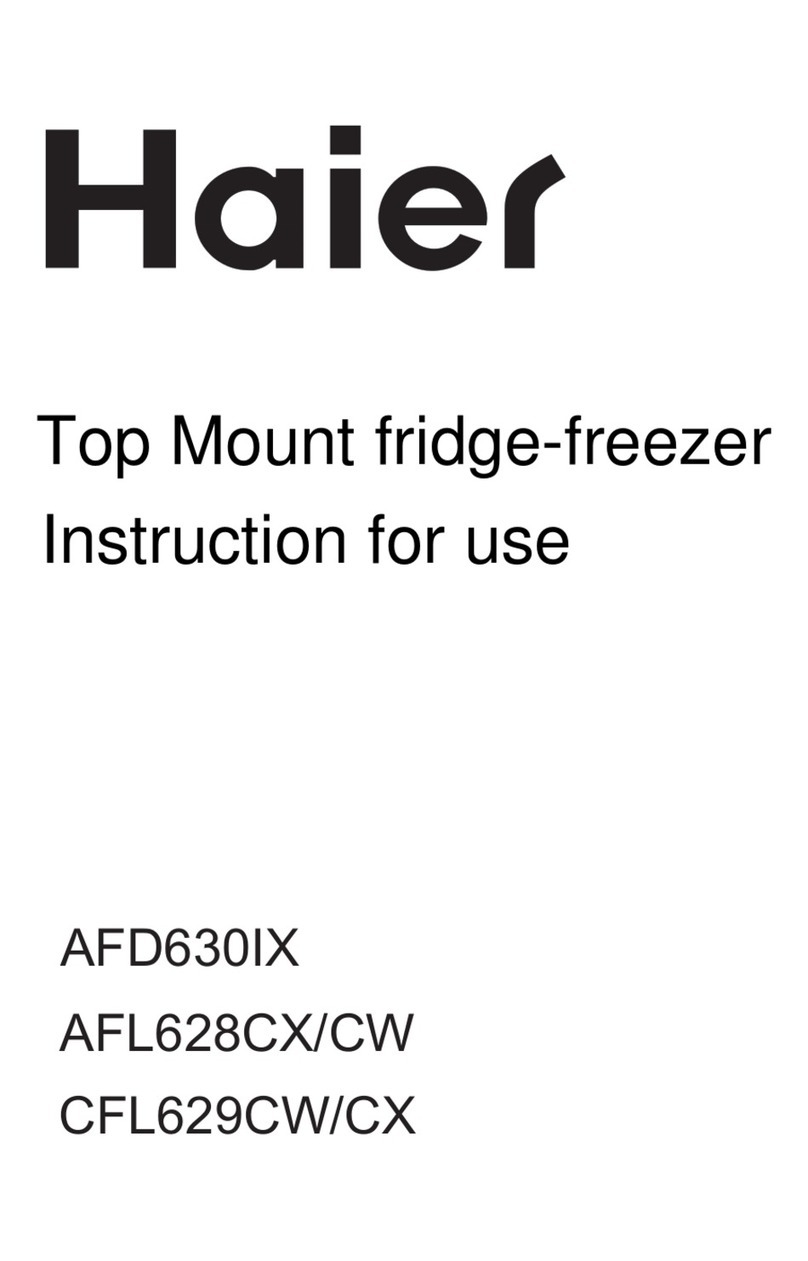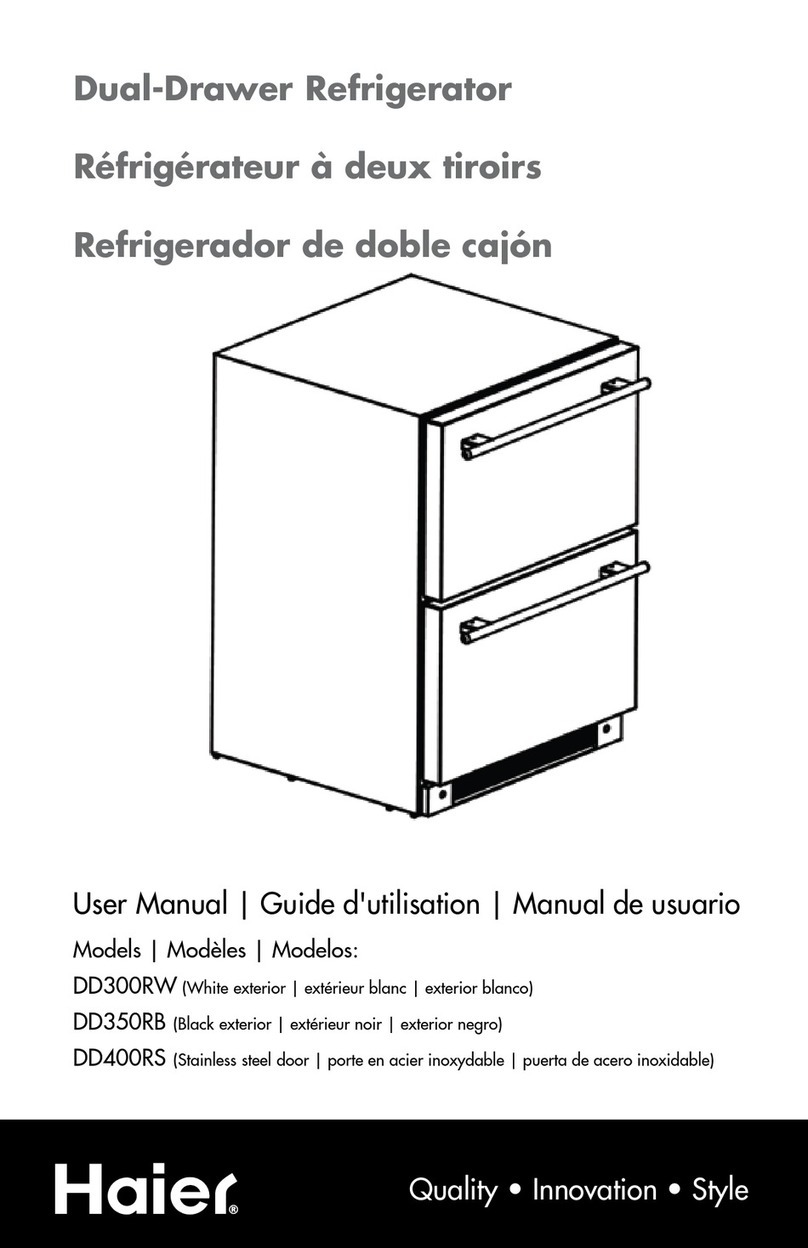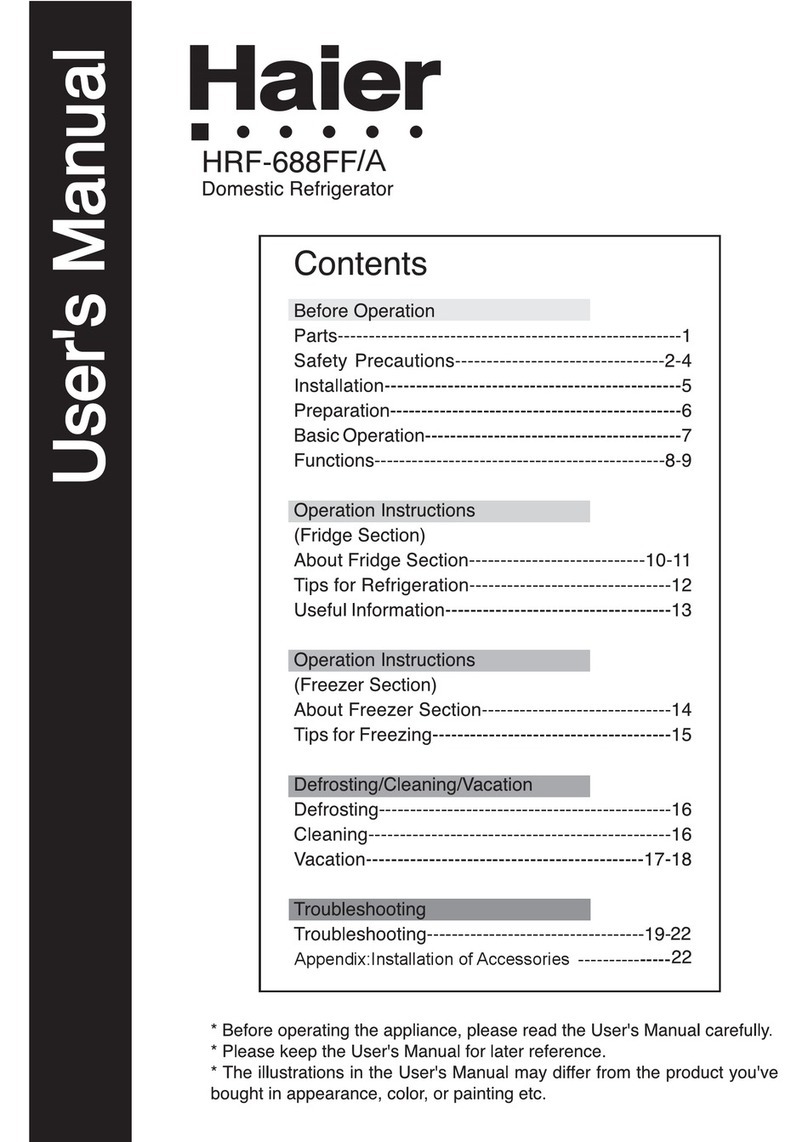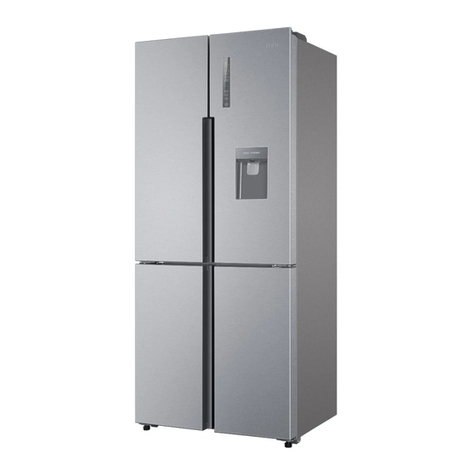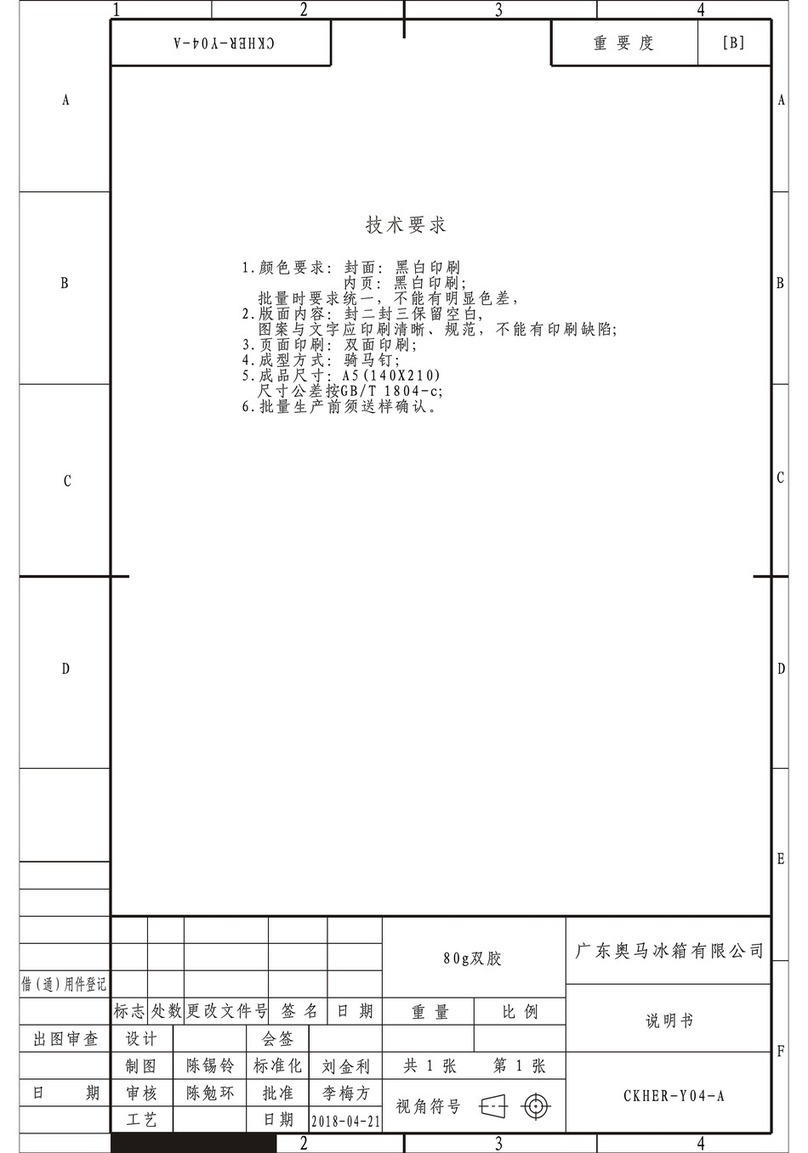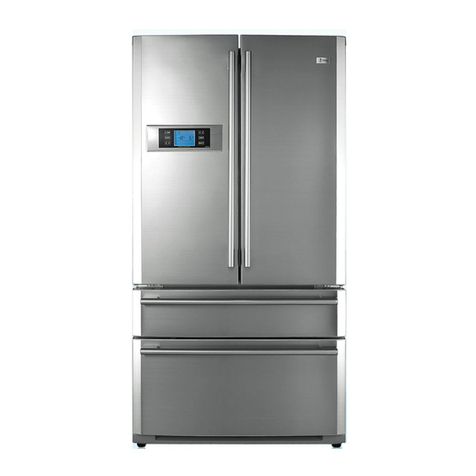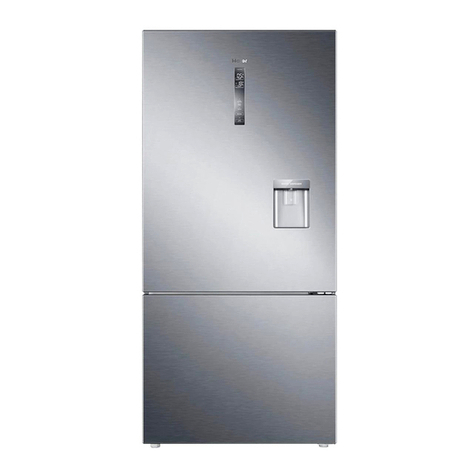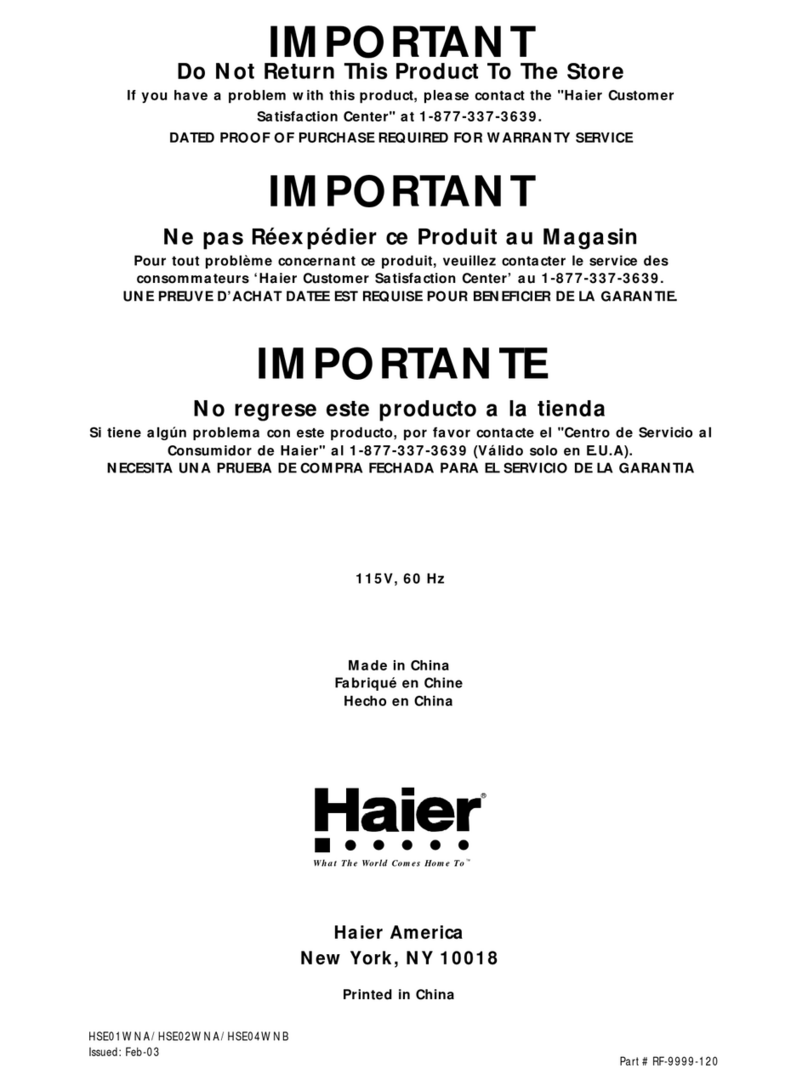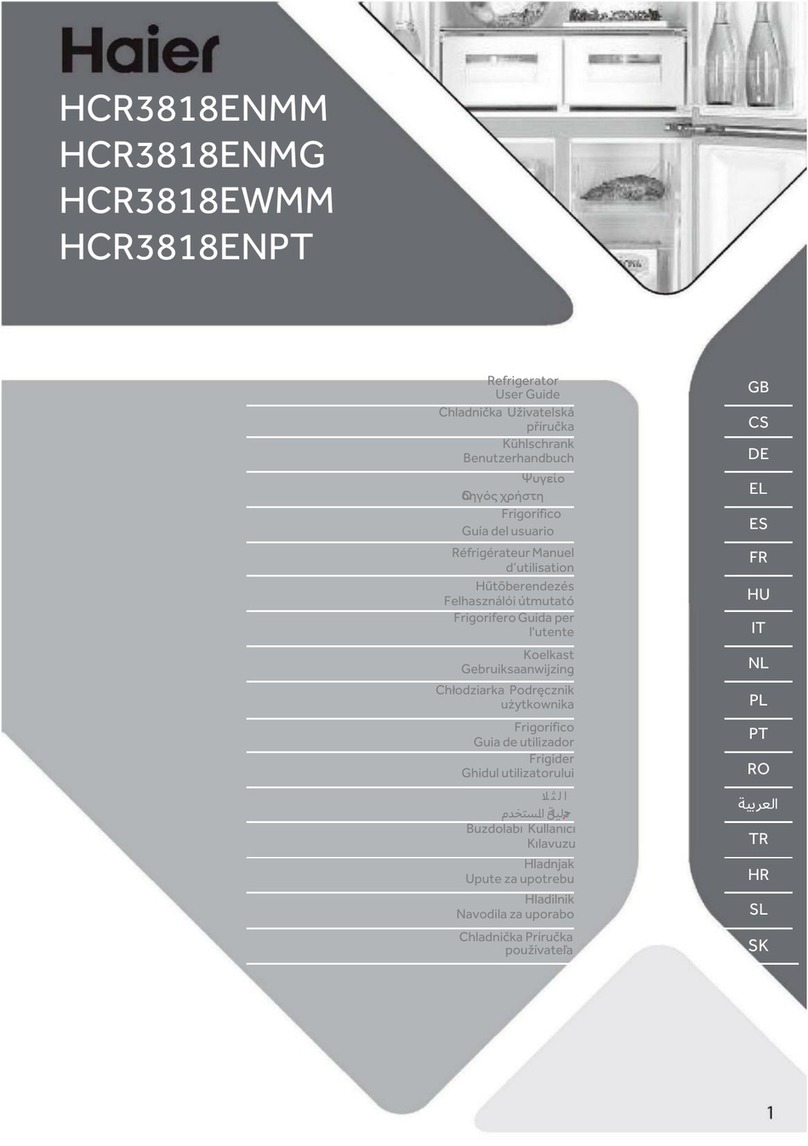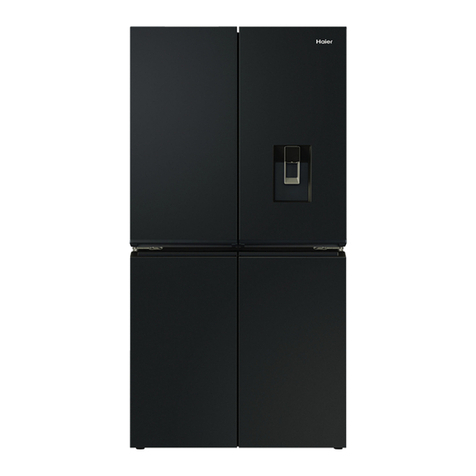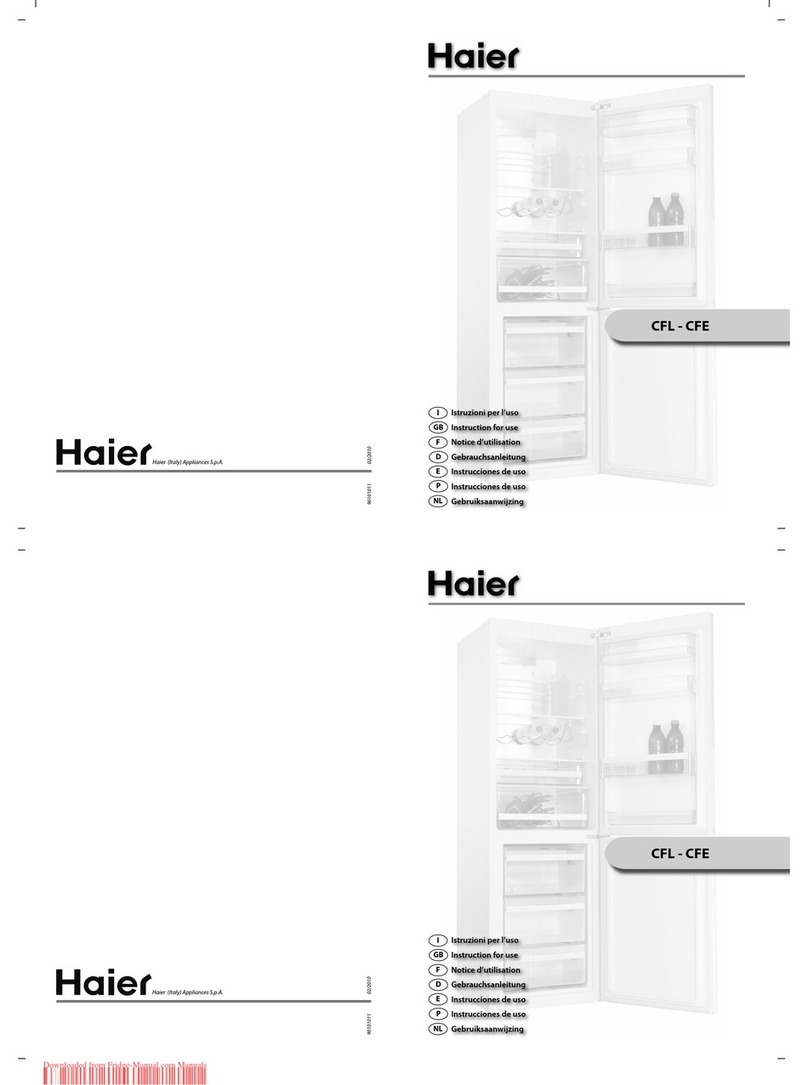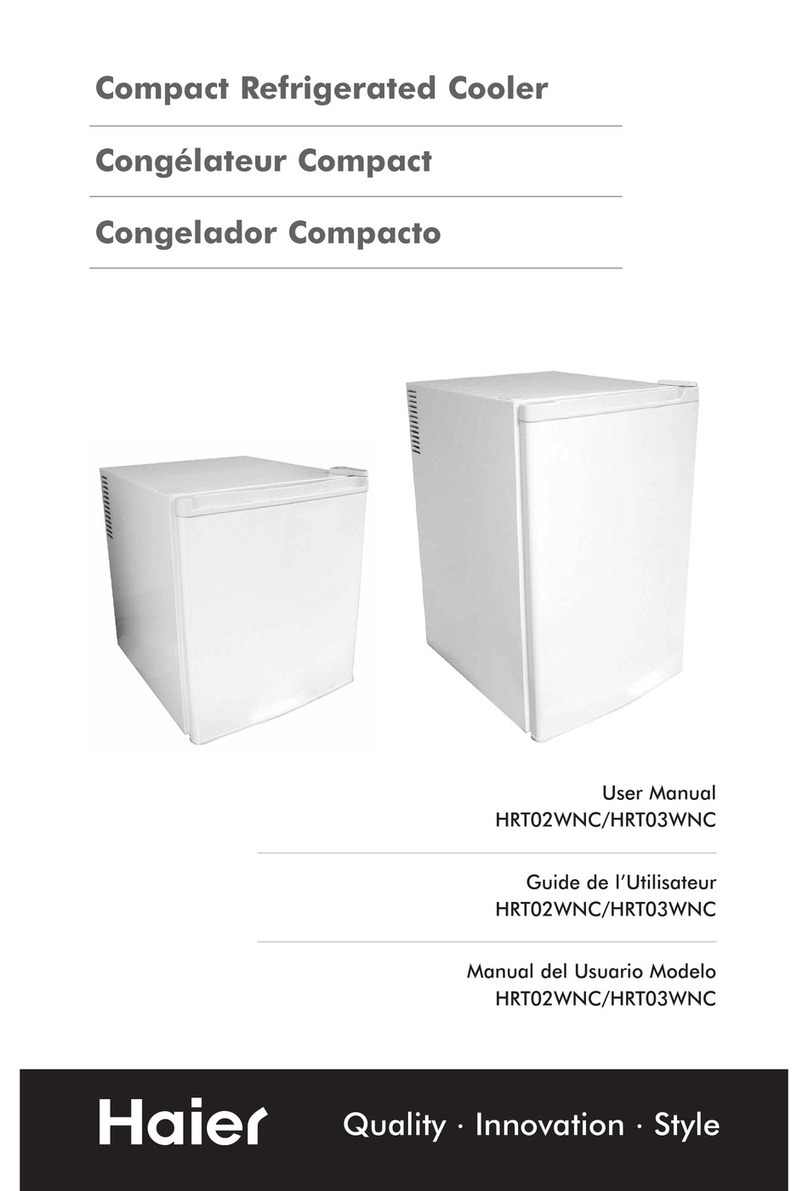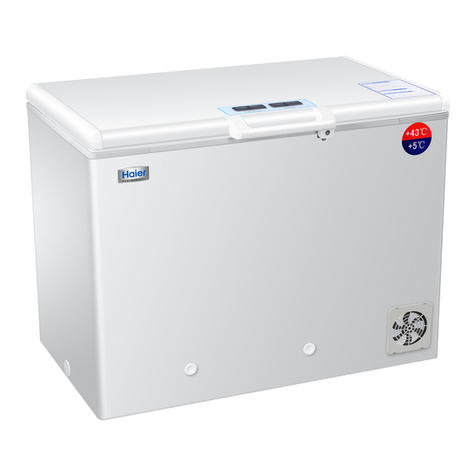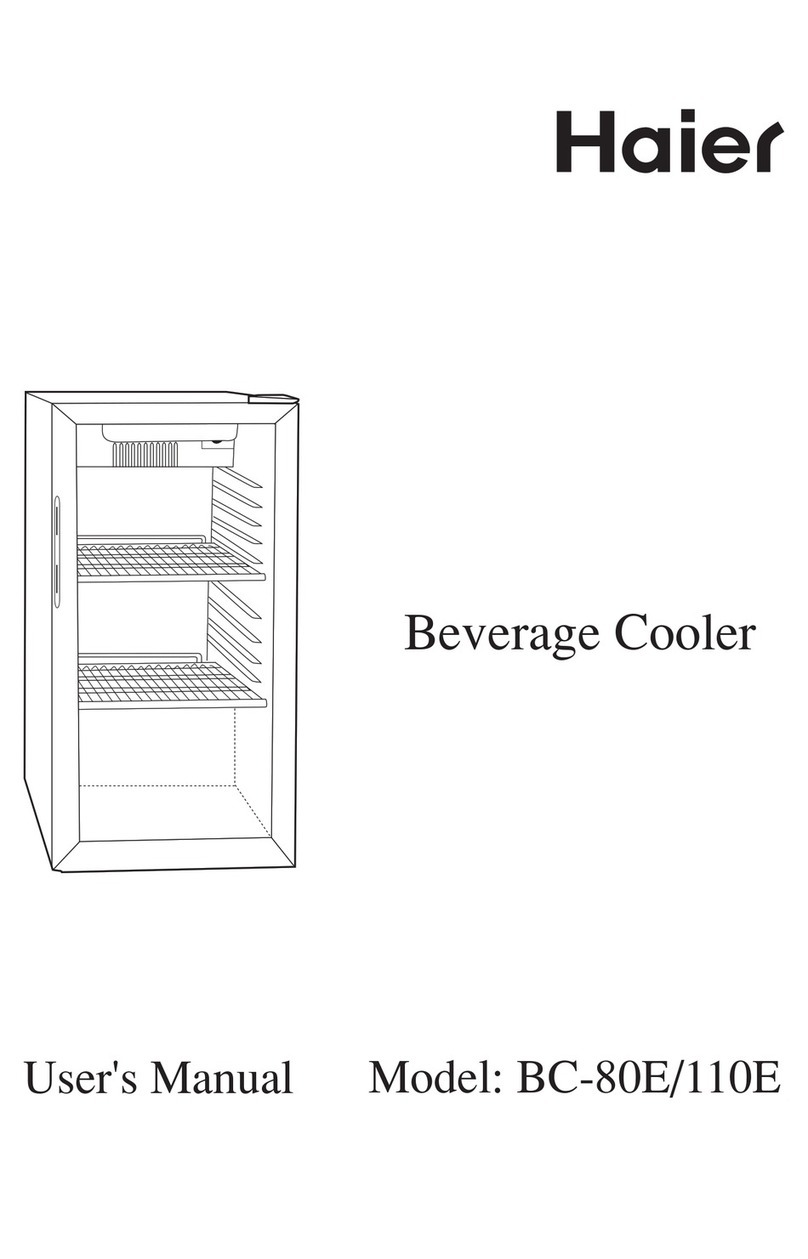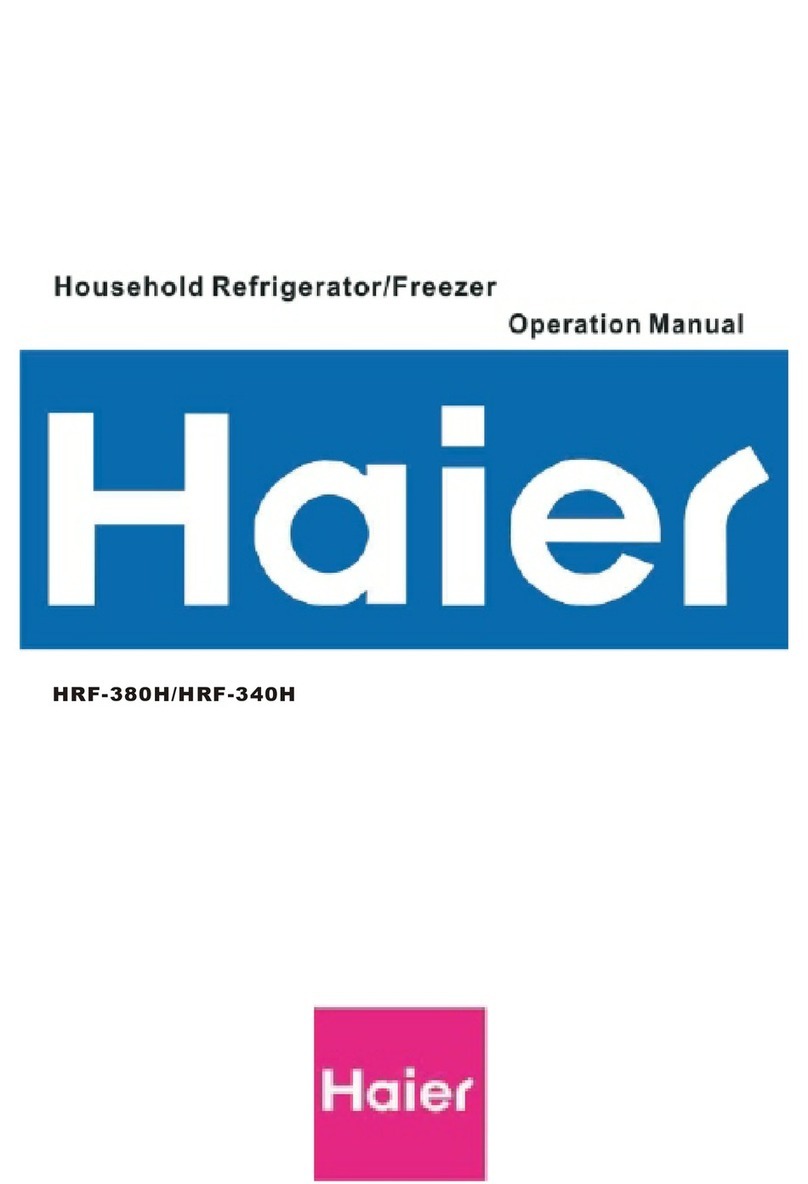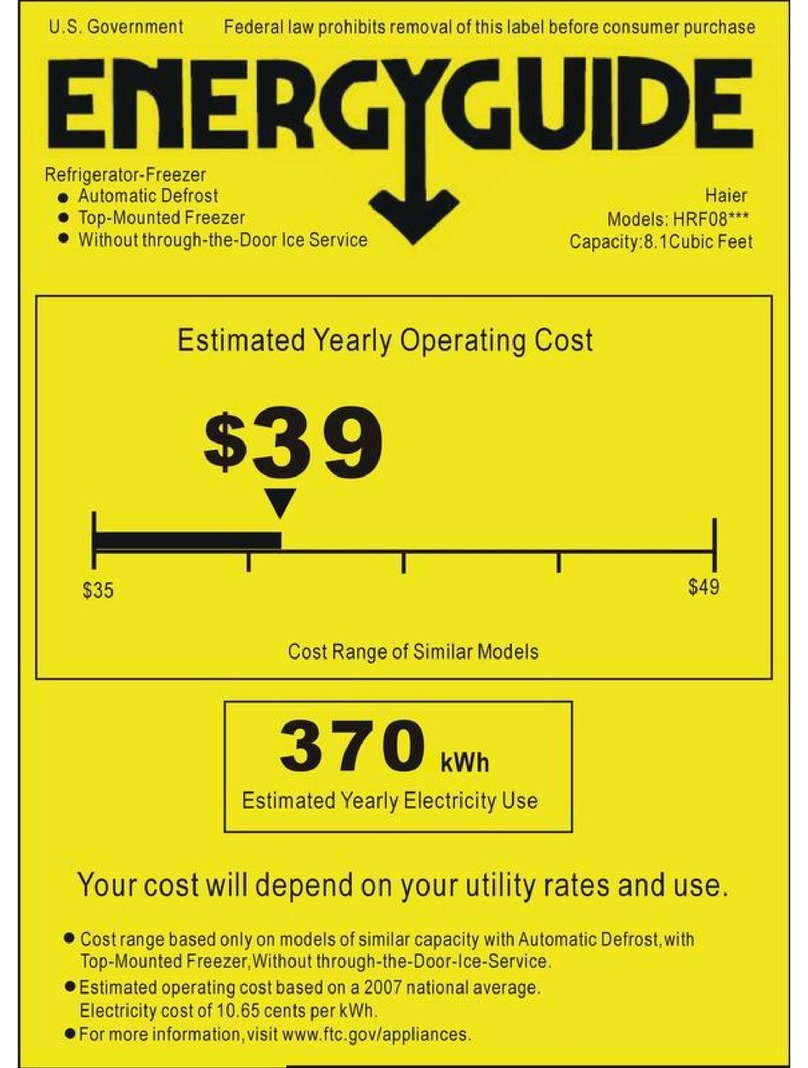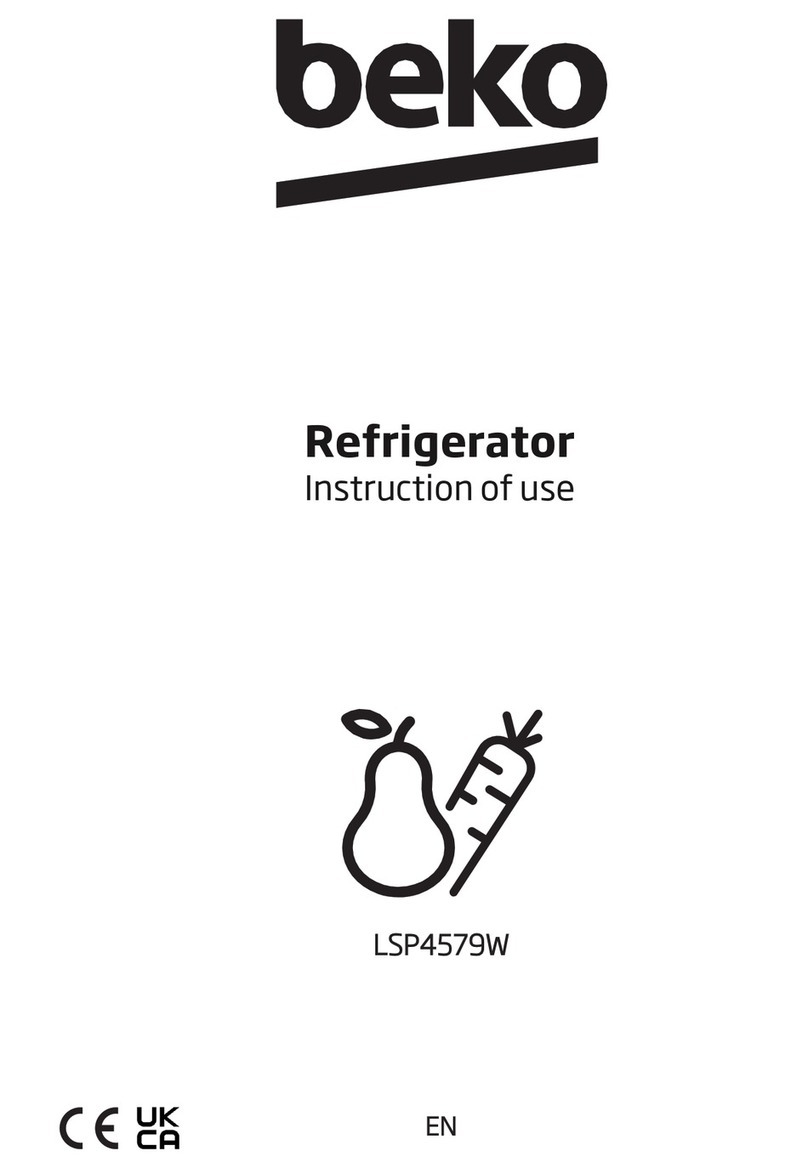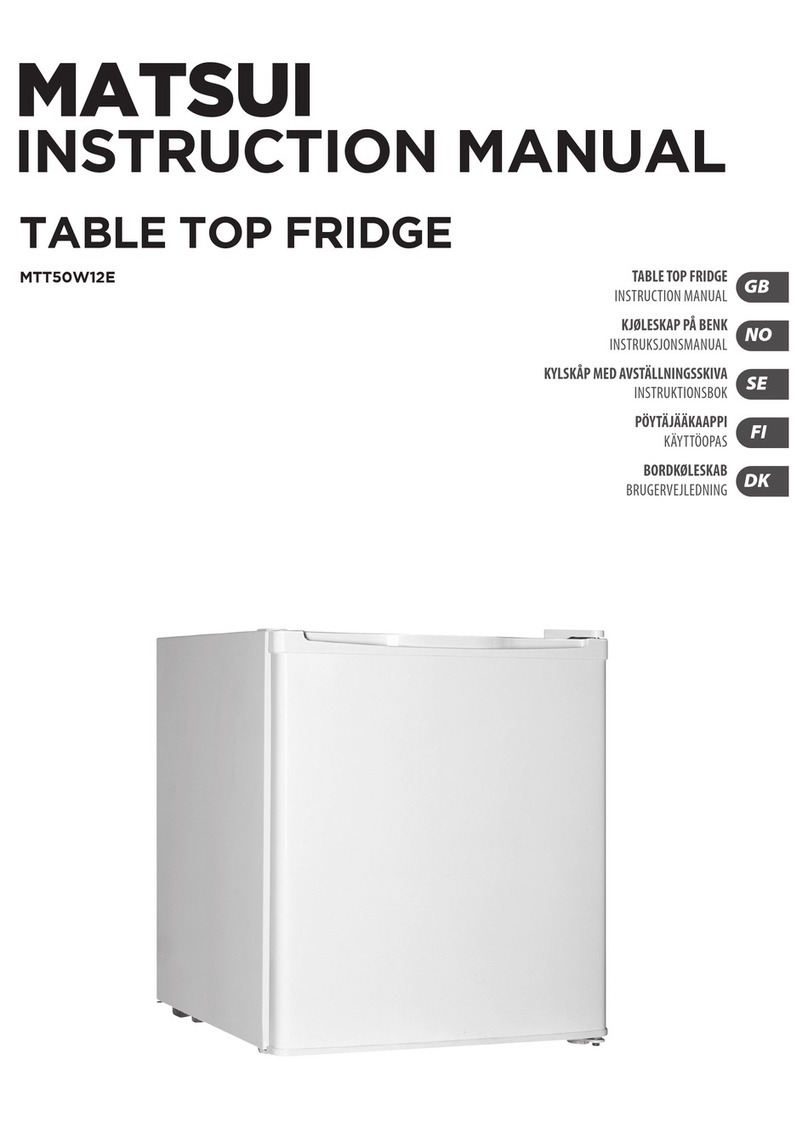Thank you for buying this Haier fridge-freezer. To ensure that you get the best results from your
new fridge, please take time to read through these simple instructions in this booklet.
Please ensure that the packaging material is disposal of in accordance with the current
environmental requirements.
If the appliance is visibly damaged, do not connect it to the power supply, contact the store from
where you purchased the appliance.
ELECTRICAL CONNECTION (UK ONLY)
For your safety please read the following information.
Warning: This appliance must be earthed.
The appliance must be connected to a 220 - 240 volts 50 cycle AC supply by means of a three pin
socket, suitably earthed and should be protected by a 13 amp fuse in the plug.
The appliance is supplied with a standard 13 amp 3-pin plug fitted with a 13-amp fuse.
Should the fuse require replacement, it must be replaced with a fuse rated at 13 amp and approved
to BS1362.
If the mains plug is unsuitable for the socket outlet in your home or is removed for any other
reason, then the cut off plug should be disposed of safely, do not insert the cut off plug into a
mains outlet to prevent the hazard of electric shock. Remove the fuse before disposal.
There is a danger of electric shock if the cut off plug is inserted into any 13-amp socket outlet.
How to wire a 13 amp plug:
Important
The wires in the mains lead on this appliance are colored in accordance with the following code:
Green and Yellow - Earth
Blue – Neutral
Brown – Live
As the colours may not correspond with the markings identifying the terminals in your plug
proceed as follows.
The green and yellow wire must be connected to the terminal in the plug which is marked with the
letter E or with the earth symbol or colored green and yellow.
The blue wire must be connected to the terminal marked N.
The brown wire must be connected to the terminal marked L.
You must make sure the mains cord is firmly secured under the cord clamp.
Warnings:
Keep ventilation openings, in the appliance enclosure or in the built in structure,
clear of obstructions.
Do not use mechanical devices or other means to accelerate the defrost process,
other than those recommended by the manufacturer.
Do not damage the refrigerant circuit.
Do not use electrical devices inside the food storage compartments of the appliance,
unless they are of the type recommended by the manufacturer.
2
